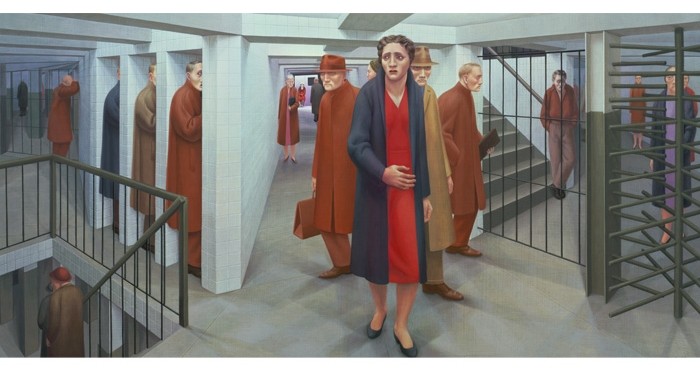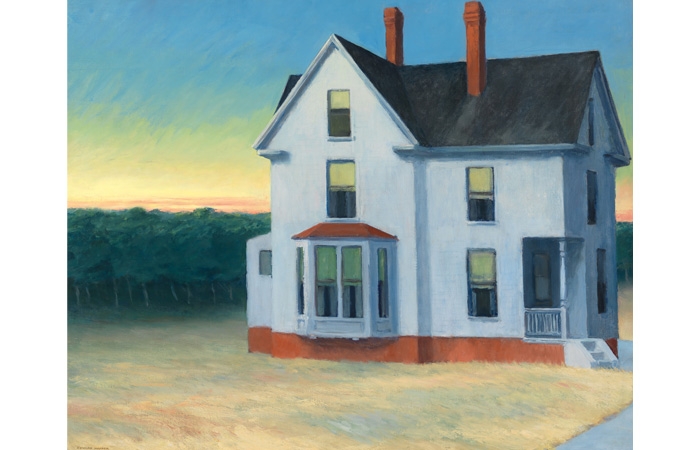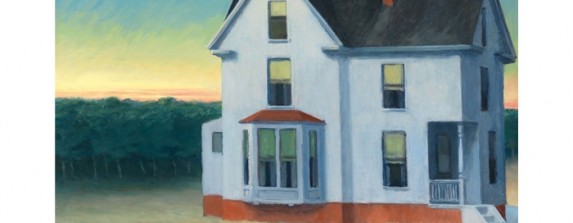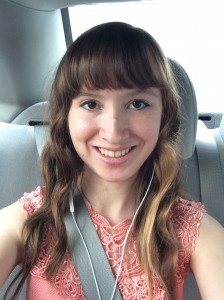
Ed. Note: University of Iowa student Chloe Cable is interning in NPT’s promotion and marketing department this year, helping us with our monthly schedule, You Tube channels, Storytellers blog and more. An art and creative writing major, she attended the Frist Center for the Visual Arts media preview for the new exhibit, Real/Surreal: Selections from the Whitney Museum of American Art, and came back with this dispatch.
All art exhibits are based on a theme or commonality; some feature an artist, a movement, a style, or a time period. The idea behind the new exhibit at the Frist Center for the Visual Arts, however, comes off as more of a thesis than a general theme. Real/Surreal: Selections from the Whitney Museum of American Art contains over sixty paintings, photographs, and prints from American artists between 1920 and 1950. It features names like Edward Hopper, Man Ray, Andrew Wyeth, and Federico Castellon. The works that comprise this exhibit have been categorized as either Realism or Surrealism. Realism is a style of art that expresses the subject in a way that stays true to its form in observable nature. Surrealism is a style of art that shows the natural world in an unnatural way to explore the emotion, imagination, and deeper realities behind the subject. These two forms of art are often considered to be polar opposites.
Real/Surreal argues that the line between these two types of art is not that clean. Rather than being a binary, they sit on a sliding scale. This idea is expressed by the first two paintings featured in the exhibit: Andrew Hopper’s Cape Cod Sunset and Man Ray’s La Fortune. They have been categorized as Realism and Surrealism, respectively. However, after experiencing a tour provided by the curator, Katie Delmez, I discovered that they don’t seem that different anymore. The very realistic Cape Cod Sunset has accurate perspective and realistic shading – and a lingering impression of loneliness. The painting portrays a large white home on Cape Cod that lacks any evidence of life. There are no people, vehicles, or personal items that one might expect to find in a painting of a house. The lack of life is so unnatural that it gives this realistic painting a surreal edge.

La Fortune – a painting of a billiard table that sits on barren earth and is surrounded by green, yellow, blue, and red clouds – has some surprisingly realistic elements. The shading is accurate and there is effective use of light source and perspective. At first glance these two paintings are complete opposites, one realistic and one surreal, but deeper inspection reveals that they are more similar than their styles label them to be. Each of the following works of art in the exhibit argues this idea. The pieces labeled as Surrealism use elements of Realism, and vice versa. I encourage visitors to the Frist to enter the upper-level galleries with this in mind in order to experience this exhibit fully. While the artwork is incredible in its own right, understanding the message behind this collection allowed me to leave with a lot more than I expected to when I first entered the exhibit.
As an art major and self-proclaimed realist, I wasn’t expecting this exhibit to be more than an interesting combination of two styles. I was prepared to “ooh” and “aah” at the right moments and then leave with another collection of paintings to add to my mental list of “seen that.” The nature of this exhibit, however, makes it nearly impossible to leave without two things: new knowledge and inspiration. Not only did I learn about two styles of art that I thought I knew almost everything about, but I acquired the impulse to do something with this knowledge.
I have always loved art; my grandmother was an art teacher and I grew up with her paintings in our home and fairly frequent visits to her basement-studio. My grandma and my mom always inspired me to be creative. When I was bored they would hand me paper and pencils and tell me to draw something. I’ve been drawing ever since, priding myself for my talent in the art of “visual mimicry.” I could set almost any object in front of me and draw it with accurate detail. But I was told by many art teachers that this wasn’t enough. “Anyone can draw something realistically,” they would say, “You have to make your work stand out. Maybe have a theme. Or you could add color to just these parts. Or you could alter something to make it more than just a drawing of the object.”
The latter option always bothered me because that would make my drawings surreal. I didn’t want to change my style of drawing. I liked realism and I disagreed that it was too common. Not everyone can draw realistically and it’s not boring. It’s fun really, creating something so realistic that it tricks the eye into thinking it’s a photograph. And all you need is paper and graphite. I considered taking their advice and altering parts of my drawings, but I liked being realistic so much that I didn’t want to risk making my drawings surreal.
Taking from the knowledge that Realism and Surrealism are not two completely separate forms of art, I have realized that making not-so-realistic changes to my realistic drawings isn’t jumping ship. Hopper’s painting is still considered realism. It’s the emotion behind the piece that makes it a little surreal, too. Art is about breaking boundaries and sometimes, like in this case, breaking binaries. It’s about expression and creativity. It is definitely not about playing things safe. I’m comfortable with how I draw now and that might just be reason enough to change things up. Most of the surrealists featured in this exhibit had training in realism and used this training to make their work surreal. I’m not saying I’m going to stop being a realist and completely switch over to Surrealism, but, according to this exhibit, I don’t have to.


